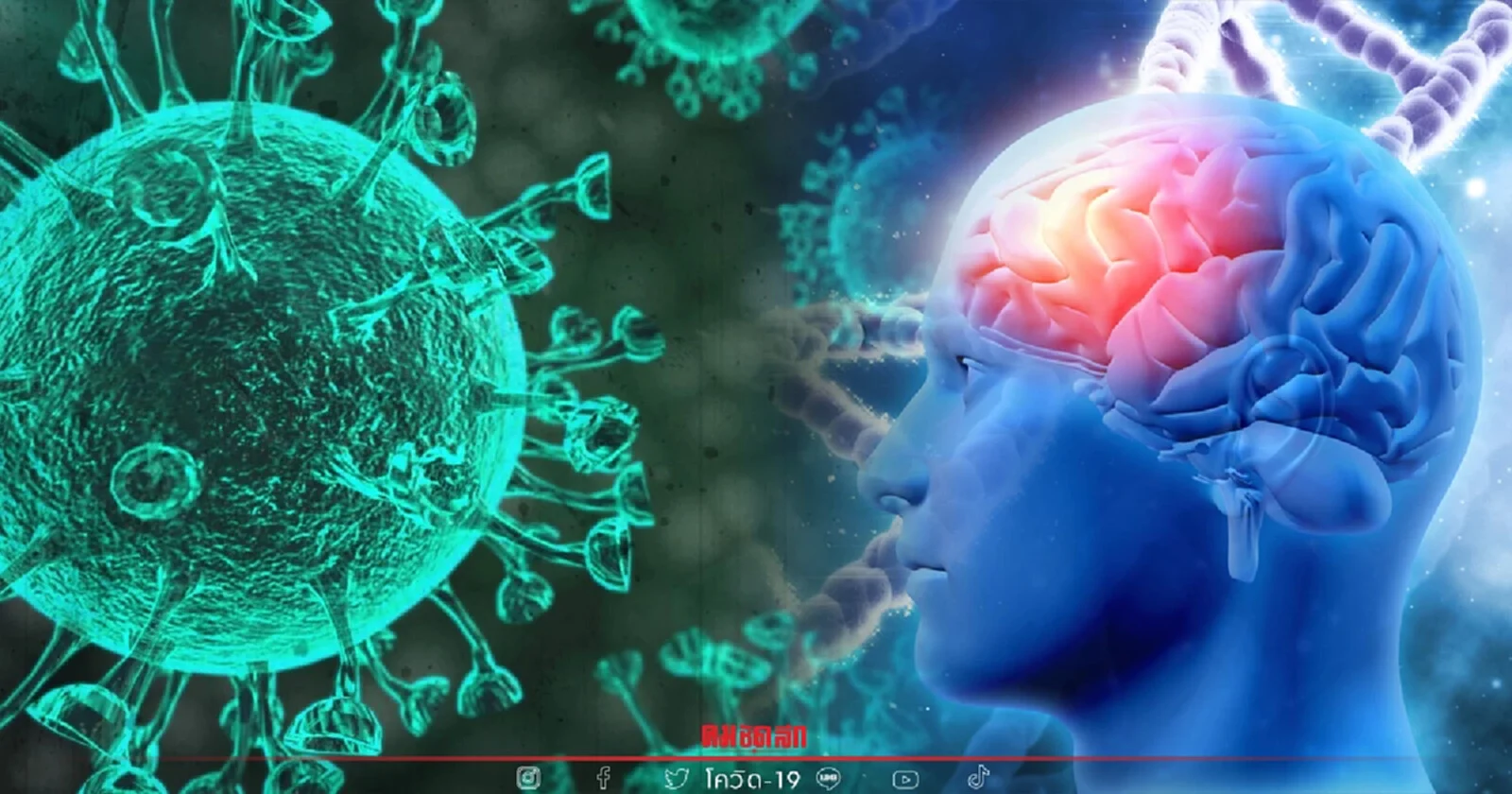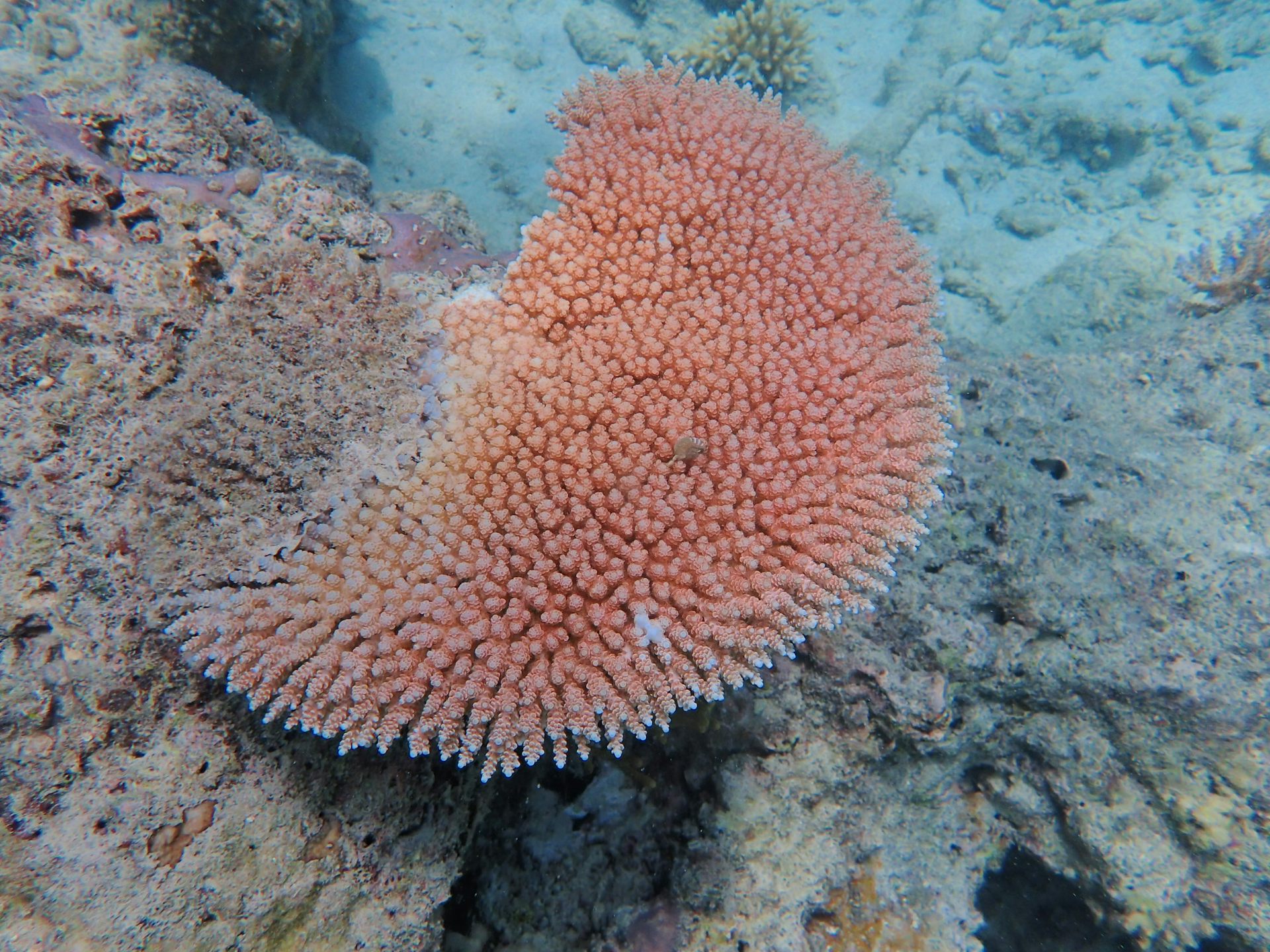Religion, Creationism, evolution, science and politics from a centre-left atheist humanist. The blog religious frauds tell lies about.
Monday, 29 August 2022
Religious Bigotry News - After the Methodists, the Anglicans Are Now Splitting Over Whether to Hate Gays or Not.
I wrote recently about how the American Methodist church is breaking up over the question about whether members of the LGBTQ community are entitled to full human rights or whether they should continue to be figures of hate, condemnation and persecution.
Now the Anglican Church in Australia is falling apart over the self-same issue. The cause, as always, is tension between what modern evolved social ethics is demanding these churches conform to, or whether they should continue to adhere to the outmoded behaviour codes as first laid down by Bronze Age male tribal leaders, some of whom were so insecure in their sexuality that they forbade homosexual sex between men (though not between women), in the belief that these are the objective and unchangeable commands of an invisible sky man on whose whims our social ethics should be based.
Curiously, the diehards these days have little difficulty accepting the triumphs of the progressives in society who in the past have adjusted to changing social attitudes towards slavery, female emancipation, European Christian white supremacism and the colonial imperialism it gave rise to, to disability right, to full adult suffrage, etc, which they now accept as right and proper in a civilised society where once they vigorously opposed them as going against the sacred word of their favourite god.
But they seem to be stuck on the question of equal rights for homosexuals, including the right to marriage, consensual sexual activity and ordination as priests in the church of their choice, though why anyone would want to be a member of, let alone a minister in, any church in which such bigotry was tolerated, and even admired, is quite beyond me.
In the following article, reprinted from The Conversation under a Creative Commons license, reformatted for stylistic consistency, Mark Jennings, Senior Lecturer in Religious Studies, University of Divinity, Australia and an employee of the Anglican diocese of Perth, Australia, analyses this split and the origins of homophobia in the Anglican Church. The original article can be read here.
Malevolent Designer News - How Creationism's Divine Malevolence is Spreading Rat Lung Worms To Humans

These days, I seem to be constantly reporting on yet another way Creationism's putative intelligent [sic] designer has found to make us sick and generally cause an increase in the suffering in the world - if you believe the Creationist disinformation about biology.
Here we have yet another example.
As though the rat lungworm, Angiostrongylus cantonensis, wasn't nasty enough, especially when it infects humans and destroys the brain, the divine malevolence has been busy finding new ways to make sure humans become infected with this nasty little nematode, as reported by researchers from the Pacific Biosciences Research Center, University of Hawaii at Mānoa, Honolulu, HI, USA and the Royal Veterinary College, London, UK, who combed through nearly 140 scientific studies to show that slugs and snails are far from being the only possible vectors of the disease.
These so-called, paratenic hosts include 32 species of freshwater prawns/shrimp, crayfish, crabs, flatworms, fish, sea snakes, frogs, toads, lizards, centipedes, cattle and pigs. Of these, at least 13 species of prawns/shrimp, crabs, flatworms, fish, frogs, toads, lizards, and centipedes have been associated with causing rat lungworm disease in humans.
Although these paratenic hosts can become infected, the parasites remain in their immature form until eaten by a rodent, when they mature. If one of these paratenic hosts or an intermediate host such as a slug or snail is ingested by a human, the parasite continues to develop but only up to a point. That point is when they are in the person's brain, moving around and feeding on brain cells, then they die. The resulting brain damage and inflammation as the immune systems tries to cope with the dead worms is the cause of the symptoms of rat lung worm disease. Not usually fatal, but the process and debility it causes can be prolonged.
Here is what the US Centre for Disease Control and Prevention (CDC) has to say about it:
Sunday, 28 August 2022
Creationism In Crisis - More Bad News for Creationists as Scientists Use the TOE to Work Out How Mucus Evolved

Phylogeny on the left represents the relationship between the species analyzed here [human (hg38), mouse (mm10), cow (bosTau9), and ferret (musFur1)]. Schematic karyotypes show the chromosomes in each species that harbor mucin genes. Mucin gene locations are indicated on each chromosome. Ancestral mucin genes that are orthologous in the four genomes are indicated in blue fonts. Lineage-specific mucins are indicated in green fonts. Mucin genes found within the SCPP gene family, all of which, except for MUC7, are lineage-specific are indicated in pink fonts. Note: Some of the orthologous genes carry different names in different species. For example, rodent Muc3 is orthologous to human MUC17. For those genes, we indicated in parentheses following the official gene annotation the name of the likely human ortholog based on sequence similarity and synteny. In ferrets, the “S” proceeding the putative chromosome number indicates on which Hi-C scaffold the mucin genes were found.
And guess what! The Theory of Evolution was absolutely essential to understanding the process!
And even worse for creationist frauds who are trying to convince their dupes that the second law of thermodynamics somehow means that no new information can arise without the assistance of a magic creator, is the news that this evolution involved examples of gene doubling where a mistake in replication - a mutation - has provided the process of evolution with genetic 'information' that can be changed without harming the carrier of that mutation. In other words, mutation followed by natural selection has increased the amount of information in the genome by perfectly natural processes, with no need to include magic or a magic creator in the explanation.
The News release by Charlotte Hsu, from the University of Buffalo explains how the scientists made this discovery:
Fewer in U.S. Now See Bible as Literal Word of God

This shows the percentage of American adults who believe the Bible is the literal word of God is down to just 20%, half what it was in July 1980. This is still astonishingly high by European standards and means 1 in 5 American Adults believe Adam & Eve, Noah's Ark, and the Tower of Babel were actual, historical events and that the Universe was created by magic in just 7 days, including the dome over earth into which the sun, moon and stars are fixed, and from which stars can shake loose and fall down during earthquakes.
Nevertheless, halving that percentage in 42 years represents something of a triumph for science and common sense.
Even more encouraging news is that the percentage who believe the Bible is just a collection of myths, history and moral precepts written by men has now established a firm lead over the literalists, at 29% (almost triple what it was in 1980).
Wednesday, 24 August 2022
Science News - How We Know What Happened Millions of Years Ago.
The tactic depends on Creationists not realising that deductive logic and objective analysis of the evidence is a perfectly valid way to determine what happened. Ask a Creationist who is trying out that fallacy, how they can be certain their great grandparents had sex if they weren't there to witness it, and they usually withdraw from the conversation, often hurling abuse and threats as they do so. Of course, theirs, their parents and their grandparents existence are all evidence that their great grandparents got close at least ones.
That was a long-winded introduction to a piece of research published recently in PNAS that reports how an international collaboration of scientists have shown how fossil teeth of pre-human African apes can be analysed to determine the climate changes that may have driven theirs, and eventually our, evolution.
The account of how they did this and its significance is explained in an article in The Conversation by Tanya M. Smith, Professor in the Australian Research Centre for Human Evolution & Griffith Centre for Social and Cultural Research, Griffith University, Australia, and Daniel Green, a Postdoctoral Research Scientist at Lamont-Doherty Earth Observatory and Climate School, Columbia University, New York.
The article is reproduced here, reformatted for stylistic consistency, under a Creative Commons licence. The original article can be read here:
Sunday, 21 August 2022
Christian Hate News - Now The Methodists are Splitting Over How Best to Hate LGBTQ People
A losing or defeated group invariably turns inward and fragments as it looks for scapegoats.
This was never more true than of the American United Methodists, America's second largest Protestant denomination, who, like other Christian denominations, are struggling against falling membership and with trying to keep up with rapidly changing cultural attitudes such as acceptance of LGBTQ people as being as entitled to full human rights as anyone else, including the right to same-sex marriage and/or ordination as pastors in the church of their choice.
It's the same old story of a religion which believes it's morals are handed down from divine authority and codified in a sacred book. These morals eventually become outdated and no longer suitable, as social ethics evolve along with society, to the extent that they come to be regarded as immoral. The mistake is in assuming that morality is fixed and unchangeable and based either on some objective standard or the arbitrary whim of a deity. In reality, of course, they evolve as part of cultural evolution.
Like the Catholic and other Christian Churches, the Methodists are now tearing themselves apart because, to change and accommodate the growing cultural acceptance of LGBTQ rights is to abandon what die-hard conservatives regard as core beliefs. The traditionalists regard the progressives as no longer 'real Methodists' while the progressives regard the conservatives as truculent die-hards, holding the church back and preaching an immoral gospel that gives excuses to would-be bullies and sanctimonious hypocrites, who would deny basic human rights to people of their choosing if allowed to, whilst preaching freedom and the essential equality of Man.
Saturday, 20 August 2022
Why Scientific Evidence Doesn't Change a Fundamentalist's or Conspiracist's Mind

The networks are shown for GM food (A) and childhood vaccines (B) and include moral beliefs (orange nodes) and social beliefs (green nodes). The ties represent the partial correlations between two beliefs controlled for all other beliefs. Blue (red) ties represent positive (negative) correlations, and the widths of the ties correspond to the strength of the correlations. The strength of the ties ranged from 0.02 (between the beliefs “Chi” and “Fam”) to 0.30 (between the beliefs “Med” and “Sci”) for GM food and from 0.02 (between the beliefs “Com” and “Jou”) to 0.28 (between the beliefs “OnE” and “OnC”), N = 979.
Two reserchers at the Santa Fe Institute, Santa Fe, New Mexico, USA, postdoctoral Fellows Jonas Dalege and Tamara van der Does, have developed a model to predict whether a person is likely to change his/her beliefs when presented with evidence-based information.
Those who have ever tried debating in the social media with Creationists, Antivaxxers, QAnon cultists or people who believe Donald Trump won the 2020 presidential election, will be aware that people with these counter-factual beliefs are almost impossible to shift from those positions, no matter how strong the evidence presented to them.
The problem is our old friend, cognitive dissonance. Briefly, cognitive dissonance is the conflict or dissonance that is generated when firmly held belief meets contrary evidence. The result is emotional discomfort, sometimes amounting to a perceived threat, which needs to be resolved one way or another.
Friday, 19 August 2022
Fleecing the Flock - An Evangeilcal Pastor Shouts Abuse at His Followers For Not Buying Him a Luxury Watch
Self-styled 'prophet', Pastor Carlton Funderburke of the non-denominational Church of the Well in Kansas City, Missouri, thought he had hit upon a new method of extracting wealth from his followers - demand they give him expensive gifts, then shouts abuse at them to try to make them feel guilt and shame for not obeying him.
Having asked his
In a jaw-dropping display of hypocrisy, he then shouted at them like a spoiled toddler who didn’t get what he wanted for his birthday, complaining that they think more of their own possessions than they do of him:
Thursday, 18 August 2022
Why Religious Fundamentalists Won't Change Their Minds
Reinforce that natural resistance to change with the paranoid idea that there is a mind-reading, invisible sky man who will punish you with unimaginable horrors for eternity for even thinking of doing so, and you have the explanation for this intellectual cowardice and scientific bankruptcy.
In this article reproduced from The Conversation, reprinted under a Creative Commons license and reformatted for stylistic consistency, Professor Keith M. Bellizzi, Professor of Human Development and Family Sciences, University of Connecticut, USA, explains this basic aspect of human psychology. The original article can be read here.
Malevolent Designer News - A Brief History of The Divine Malevolence's Favourite Pestilence
In the first of the series, I looked at how the SARS-CoV-1 virus that caused the short-lived SARS (severe acute respiratory syndrome) epidemic of 2002/2003 looks, from an Intelligent [sic] Design perspective (if you believe that superstitious nonsense), to have been a prototype which Creationism's divine malevolence built on to produce the much more devastating SARS-CoV-2 virus. This virus causes COVID-19 (Corona VIrus Disease 2019) and is still posing a serious threat to life, long-term health, health services and economies world-wide, almost 3 years after it was first detected, at the end of 2019.
SARS-CoV-2 is a member of the coronavirus family, so-called because they have prominent 'spike' proteins on their surface which give the virus particles a crown-like (corona) appearance under sufficient magnification. They are all RNA viruses that have a single strand of RNA as their functional genome. The spike proteins are used by the virus to lock onto the surface of cells, prise them open and inject their RNA into the cell, where it uses the cell's own metabolic processes to make more virus particles and kill the cell.
In this article reprinted from The Conversation under a Creative Commons license, reformatted for stylistic consistency, Lindsay Broadbent, a Research Fellow at the School of Medicine, Dentistry and Biomedical Sciences, Queen's University Belfast, explains the history of coronaviruses. The article is undated but reads as though it was written during the first lockdown in about April or May 2020.
The original article can be read here.
Wednesday, 17 August 2022
Malevolent Designer News - How SARS Was The Malevolent Designer's Prototype for SARS-CoV-2.
The answer seems to be in the way it is transmitted from one person to another. SARS patients were only infectious when they had symptoms and were relatively ill. This meant that they tended to self-isolate, because they didn't feel well enough to mix socially, and symptom-based measures such as compulsory isolation were effective control measures.
SARS-CoV-2, on the other hand can be asymptomatic for long enough for the victim to have mixed socially before becoming unwell, if at all, and SARS-CoV-2 can be transmitted effectively by asymptomatic carriers.
From a Creationist perspective, the Malevolent Designer was just practicing with its SARS-CoV-1 prototype, and added refinements to its later version to overcome our early measures to contain it, which had worked well against its prototype.
The following article from The Conversation was written in 1920, when the pandemic was in its earlier phase and before the vaccines against it had been produced. It is reproduced here under a Creative Commons license, reformatted for stylistic consistency. The original can be read here.
Tuesday, 16 August 2022
Evolution News - How Fungi Got Their Diverse Shapes







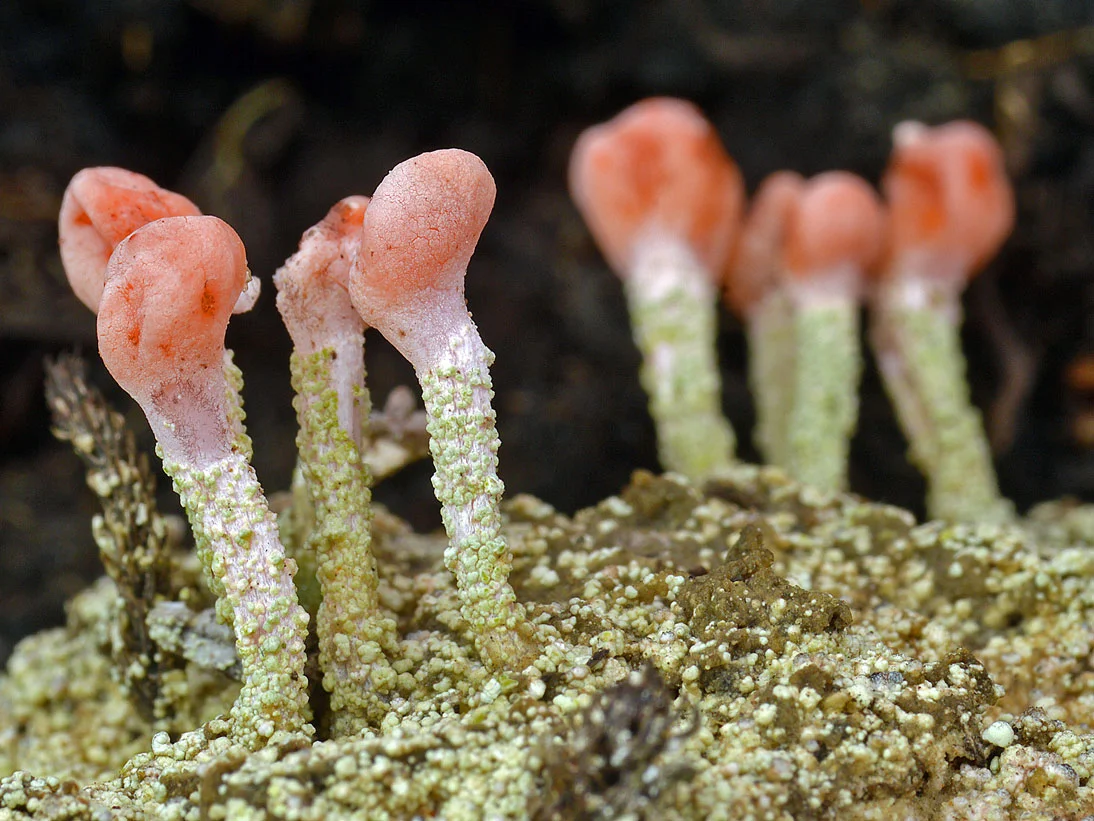

















Scientists from Bristol University, UK, have shown that the current diversity in the shape of fungi was the result of bursts of evolutionary radiation, following increases in multicellular complexity.
Creationists will need to ignore the fact that this explanation shows how the Theory of Evolution is fundamental to understanding biodiversity, in complete contrast to what their reality-denying disinformation sources have been claiming for the last half century.
Sadly, the team's published paper in Nature Ecology & Evolution is behind an expensive paywall, but the Bristol University press release explains their method and basic findings:
Monday, 15 August 2022
Creationism - A Notion In Crisis - Now Its Human Evolution by LOSS of Complexity!
Question - How can you tell it's time to ditch a daft idea?
Answer - When its basic claims keep being refuted by science.
This is the problem, Creation Inc. (No donation too large; give till it hurts!) is now facing, as yet another basic axiom is refuted by scientific observation. To make matters worse for them, scientists led by researchers from Kyoto University, Japan, who discovered this latest refutation of Creationism, had no intention of doing so. Their intention was to reveal another factoid in the story of human evolution and, as so often, that factoid just happens to refute a basic Creationist claim.
Saturday, 13 August 2022
Malevolent Designer News - Medical Science Has Presented Creationism's Malevolent Designer with a New Challenge

It's a basic axiom of intelligent [sic] design creationism that evolution doesn't happen, so all change is the intentional design of a single creator (because, although they deny it's religion in disguise, the designer has to comply with basic Christian dogma, too, including a single creator god).
It that were true, news from the American Chemical Society, of a new drug that is proving to be effective against multiple drug-resistant bacteria, is a new challenge for Creationism's divine malevolence. It has been working hard, ever since the discovery of penicillin, to design ways in which its pathogens can continue to make us sick, by making them resistant to it and then to every other new antibiotic, in an arms race that looks exactly like the sort of evolutionary arms race that the Theory of Evolution by Natural Selection predicts.
Of course, Creation Inc. (no donation too large) has devised all manner of convoluted mental gymnastics for its followers to use to explain this apparent mendacity away and to portray the designer of these pathogens and their resistance as something else, because the real creator is infinitely benevolent and would like nothing better than having us all healthy and happy. The excuse usually includes blaming the victim or his/her ancestor/family, or humanity as a whole, or something someone once did thousands of years ago according to religious superstitions, while still pretending this is a scientific explanation, so ID creationism is real science, which should be taught to school children in science class at tax-payer's expense.
So, what exactly is this new drug and how does it work? The American Chemical Society (ACS) news release explains:
Thursday, 11 August 2022
Another Bible Blooper Exposed by Science.

And God made two great lights; the greater light to rule the day, and the lesser light to rule the night: he made the stars also. And God set them in the firmament of the heaven to give light upon the earth, And to rule over the day and over the night, and to divide the light from the darkness: and God saw that it was good.
And the evening and the morning were the fourth day.
Genesis 1:16-19
The problem these cultists have is that science continually and consistently proves this, and much else in the Bible, wrong - which is embarrassing for words of the supposed creator of it. Sadly, for them, it can't even be passed off as an allegory or a metaphor - the usual excuse when the Bible describes something that isn't so - because there is nothing that can be represented as a firmament to which the sun and moon are fixed, and the moon can't even be represented as a lamp, since a lamp has its own light, and the moon doesn't. Nor is the moon only visible at night, so if its purpose really was to tell us when it is night time, the putative creator couldn't even get that right!
Tuesday, 9 August 2022
Oops! Scientists Expose Another Creationist Lie

Credit (right): Smokeybjb, CC BY-SA 3.0, via Wikimedia.
As anyone who frequents social media Creationism vs Science groups will be familiar, Creationists love fossilised 'soft' tissue, which they claim shows Earth is just a few thousand years old because soft tissue would have rotted away before now if Earth really is billions of years old, like scientists say. Some Creationists will even try to pad out their soft tissue 'argument' with the lie that such fossils have been subjected to carbon 14 dating and found to be just a few thousand years old, forgetting for the moment that Creationist dogma requires that all radiometric dating techniques must be dismissed as fake because "radiometric (read C14) dating is a flawed concept, because it doesn’t work for anything older than 50,000 years".
It is, of course, nonsense, because what these so-called soft-tissue fossils are not, is soft. They are hard fossils of what had been soft tissue just as hard-tissue fossils are hard fossils of what had been hard tissue. The question for science was not why they are still soft, but how soft tissues, in certain rare conditions, remained intact and with such detail preserved for long enough to be replaced by minerals. In particular, why do some internal organs fare better than others in that process?
Now a team of scientists from Leicester University, UK, believe they have answered that by following the process of decay in a fish. The answer is to do with the pH of the tissue as it decays, which affects how readily it can be replaced with calcium phosphate, or apatite. As the news release from Leicester University explains:
God of the Gaps News - Creationism's Little Skrinking God Just Got a Lot Smaller
The basic problem with Creationism's favourite 'argument' - 'the God of the Gaps' - is not only that it is based on two fallacies - the argument from ignorant incredulity and the false dichotomy fallacies, but also that it tends to disappear every time the gap is subjected to scientific scrutiny.
That's exactly what has just happened with one of their favourite gaps - the origin of living organisms, which they always conflate with the theory of evolution of which it is not and never was a part. Evolution is what happened after ‘life’, or more precisely, self-replication, got started.
Essentially, living organisms can trace their origins back to a self-replicating molecule because once that had arisen, everything else follows naturally by Darwinian natural selection acting on small variations in the copies (the sieve of natural selection acting on each generation to filter out the best at producing copies of themselves and remove those least able to). Just such a molecule known to exist is a short length of RNA which has been shown to self-catalyse copies of itself in a mixture of nucleotides, by nothing more complex than the operation of the basic laws of chemistry.
But the question is, how did such a molecule first assemble?
Monday, 8 August 2022
Covidiot News - Why Covidiot Antivaxxers Are Easy To Fleece
In this article, reprinted from The Conversation under a Creative Commons license, reformatted for stylistic consistency, Deborah Lupton, SHARP Professor and leader of the Vitalities Lab, Centre for Social Research in Health and Social Policy Centre, University of New South Wales, Sydney, Australia, explains how long COVID victims are being sold a new range of 'miracle cures'. Read the original article here.
Saturday, 6 August 2022
The Recent Improvement in the Great Barrier Reef Might Not Be What it Seems.

However, recent news seems to indicate that the central and northern sections of the Great Barrier Reef are showing encouraging signs of recovery, although the southern section remains under threat.
But the news might not be as good as the pictures seem to indicate, as Dr. Zoe Richards, PhD, senior research fellow at Curtain University, Western Australia and Marine Invertebrate Curator, Western Australian Museum, explains in an article in The Conversation. Her article is reprinted here under a Creative Commons license, reformatted for stylistic consistency.

Record coral cover doesn’t necessarily mean the Great Barrier Reef is in good health (despite what you may have heard)

Zoe Richards, Curtin University
In what seems like excellent news, coral cover in parts of the Great Barrier Reef is at a record high, according to new data from the Australian Institute of Marine Science. But this doesn’t necessarily mean our beloved reef is in good health.
In the north of the reef, coral cover usually fluctuates between 20% and 30%. Currently, it’s at 36%, the highest level recorded since monitoring began more than three decades ago.
This level of coral cover comes hot off the back of a disturbing decade that saw the reef endure six mass coral bleaching events, four severe tropical cyclones, active outbreaks of crown-of-thorns starfish, and water quality impacts following floods. So what’s going on?
High coral cover findings can be deceptive because they can result from only a few dominant species that grow rapidly after disturbance (such as mass bleaching). These same corals, however, are extremely susceptible to disturbance and are likely to die out within a few years.
The data are robust
The Great Barrier Reef spans 2,300 kilometres, comprising more than 3,000 individual reefs. It is an exceptionally diverse ecosystem that features more than 12,000 animal species, plus many thousand more species of plankton and marine flora.
The reef has been teetering on the edge of receiving an “in-danger” listing from the World Heritage Committee. And it was recently described in the State of the Environment Report as being in a poor and deteriorating state.
Read more:
This is Australia's most important report on the environment's deteriorating health. We present its grim findings
To protect the Great Barrier Reef, we need to routinely monitor and report on its condition. The Australian Institute of Marine Science’s long-term monitoring program has been collating and delivering this information since 1985.
Its approach involves surveying a selection of reefs that represent different habitat types (inshore, midshelf, offshore) and management zones. The latest report provides a robust and valuable synopsis of how coral cover has changed at 87 reefs across three sectors (north, central and south) over the past 36 years.
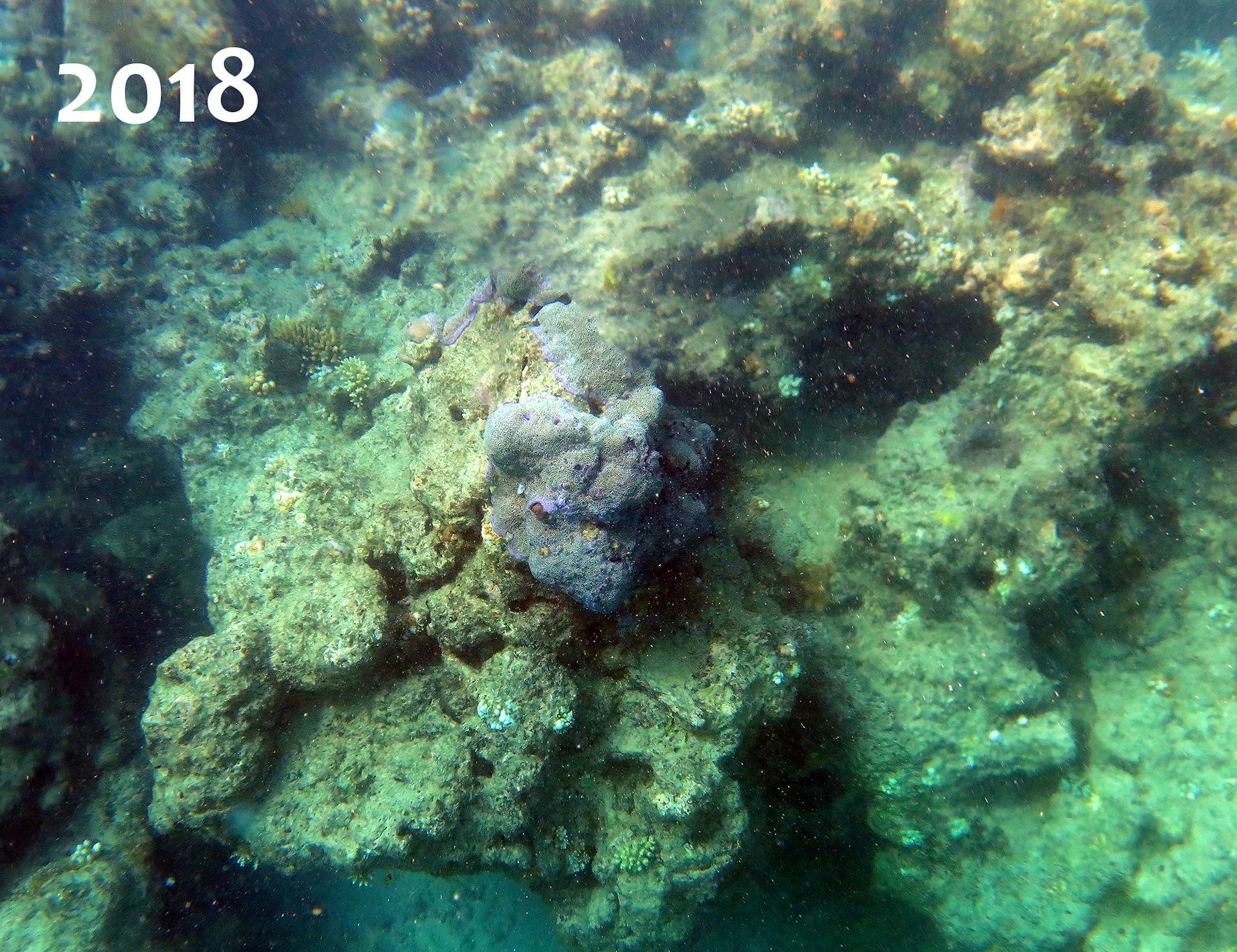

The results
Overall, the long-term monitoring team found coral cover has increased on most reefs. The level of coral cover on reefs near Cape Grenville and Princess Charlotte Bay in the northern sector has bounced back from bleaching, with two reefs having more than 75% cover.
In the central sector, where coral cover has historically been lower than in the north and south, coral cover is now at a region-wide high, at 33%.
The southern sector has a dynamic coral cover record. In the late 1980s coral cover surpassed 40%, before dropping to a region-wide low of 12% in 2011 after Cyclone Hamish.
The region is currently experiencing outbreaks of crown-of-thorns starfish. And yet, coral cover in this area is still relatively high at 34%.
“Mature coral coverage”?
— Terry Hughes (@ProfTerryHughes) August 4, 2022
Rapid increases in cover in parts of the northern and central #GreaBarrierReef since mass coral bleaching in 2016/7 are driven by larval recruitment and fast growth of juvenile weedy corals.
You can’t replace a dead 50 year-old coral in 5 years. https://t.co/bysXqu5dep
Are we being catfished by coral cover?
In the Australian Institute of Marine Science’s report, reef recovery relates solely to an increase in coral cover, so let’s unpack this term.
Coral cover is a broad proxy metric that indicates habitat condition. It’s relatively easy data to collect and report on, and is the most widely used monitoring metric on coral reefs.
The finding of high coral cover may signify a reef in good condition, and an increase in coral cover after disturbance may signify a recovering reef.
But in this instance, it’s more likely the reef is being dominated by only few species, as the report states that branching and plating Acropora species have driven the recovery of coral cover.
Acropora coral are renowned for a “boom and bust” life cycle. After disturbances such as a cyclone, Acropora species function as pioneers. They quickly recruit and colonise bare space, and the laterally growing plate-like species can rapidly cover large areas.
Fast-growing Acropora corals tend to dominate during the early phase of recovery after disturbances such as the recent series of mass bleaching events. However, these same corals are often susceptible to wave damage, disease or coral bleaching and tend to go bust within a few years.
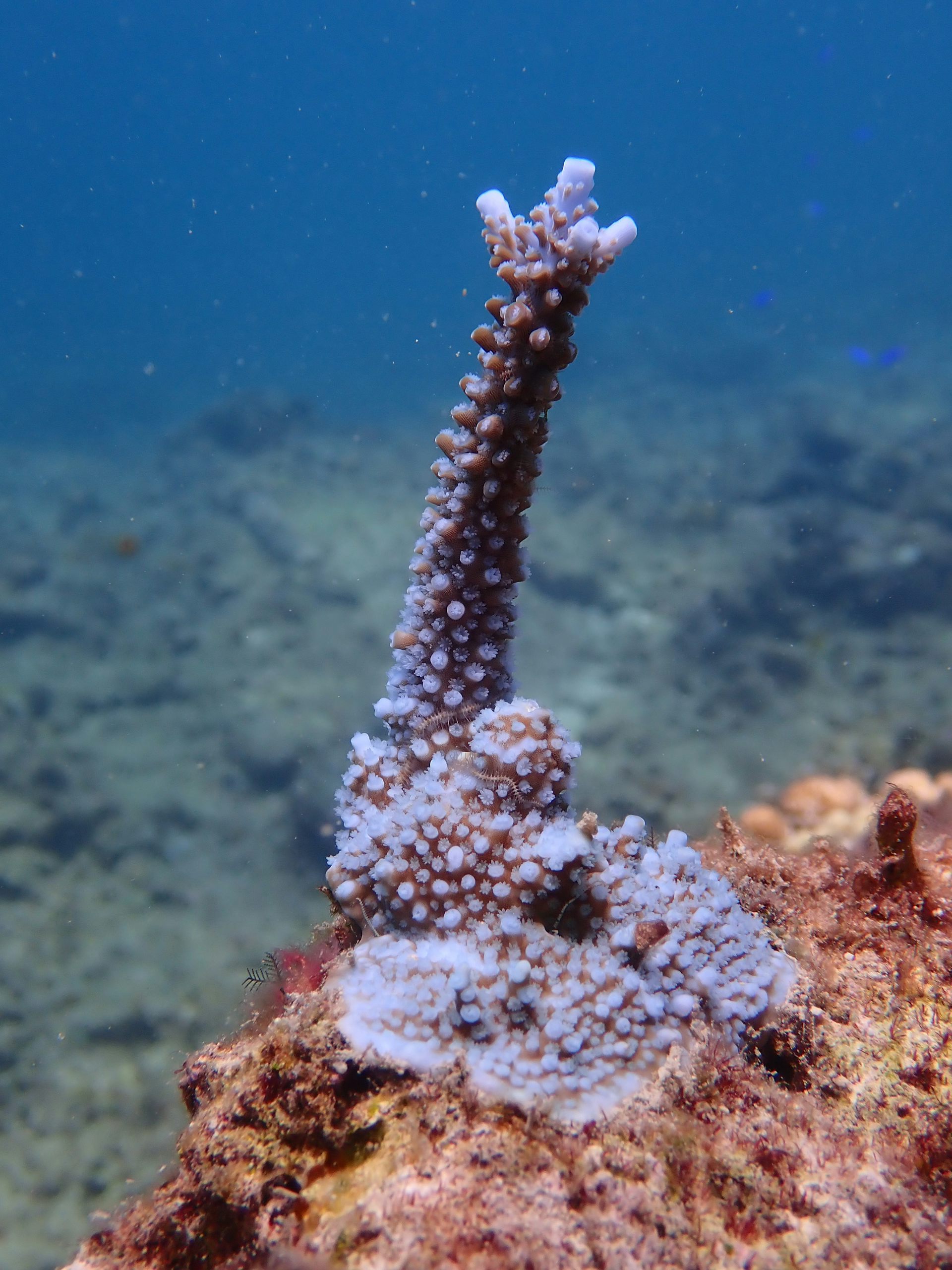
It provides no information about diversity, or the abundance and health of other animals and plants that live in and among the trees, or coral.
Cautious optimism
My study, published last year, examined 44 years of coral distribution records around Jiigurru, Lizard Island, at the northern end of the Great Barrier Reef.
It suggested that 28 of 368 species of hard coral recorded at that location haven’t been seen for at least a decade, and are at risk of local extinction.
Lizard Island is one location where coral cover has rapidly increased since the devastating 2016-17 bleaching event. Yet, there is still a real risk local extinctions of coral species have occurred.
Read more:
Almost 60 coral species around Lizard Island are 'missing' – and a Great Barrier Reef extinction crisis could be next
While there’s no data to prove or disprove it, it’s also probable that extinctions or local declines of coral-affiliated marine life, such as coral-eating fishes, crustaceans and molluscs have also occurred.
Without more information at the level of individual species, it is impossible to understand how much of the Great Barrier Reef has been lost, or recovered, since the last mass bleaching event.
Based on the coral cover data, it’s tempting to be optimistic. But given more frequent and severe heatwaves and cyclones are predicted in the future, it’s wise to be cautious about the reef’s perceived recovery or resilience.
Zoe Richards, Senior Research Fellow, Curtin University









